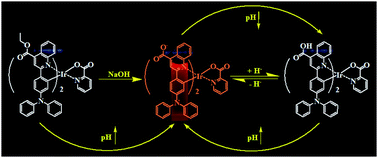The cell effectively uses the mechanism of pH fluctuation as a form of regulatory control for diverse physiological functions. Over the years, optical based methods have been used to develop chemosensors to measure the dynamics of intracellular pH, some of which have demonstrated considerable potential for biological applications.
Wei Huang and colleagues from the Nanjing University of Posts and Telecommunications, China, have developed the latest optical pH probes by making use of cyclometalated iridium (III) complexes, a well known phosphorescent emitter. Huang’s group has expanded the repertoire of useful chemosensors by synthesizing and characterizing the photophysical properties of two iridium (III) complexes using a novel substituent, carboxylic-acid.
Find out more about their discovery by accessing the link below. This paper will be free to read for the next two weeks.
Effect of pH on the photophysical properties of two new carboxylic-substituted iridium(III) complexes
Jiena Weng , Qunbo Mei , Weiwei Jiang , Quli Fan , Bihai Tong , Qidan Ling and Wei Huang
Analyst, 2013, Advance Article
DOI: 10.1039/C2AN36298H

pH effect on carboxylic-substituted iridium(III) complex










